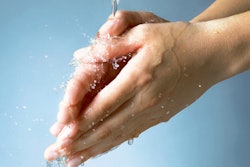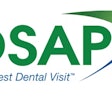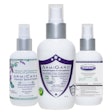
Washing your hands -- it's a ritual you do so often, you probably don't think much about it anymore. However, skimping on the basics could be costing your practice patients, according to a presentation at the 2015 Academy of General Dentistry (AGD) meeting in San Francisco.
Presenter Jessica Wilson addressed AGD conference goers about proper hand hygiene at the meeting last week. She reminded attendees why hand hygiene is important, citing a study that found that one-quarter of patients will not return to a dental practice because of poor infection-control protocols, such as inadequate hand washing.
"This is something that is so easy and so visible," she said. "Hand hygiene is the single most critical way that we can prevent infection."
Wilson is an instrument management and infection-prevention specialist for Hu-Friedy. She is also a member of the American Dental Assistants Association (ADAA) and a national speaker, trainer, and educator on infection control.
To illustrate her point, Wilson referred to hospitals, which historically have around a 45% hand-washing compliance rate. She said that approximately 2 million people acquire an infection in hospitals every year, and about half of those people die. As a result, hospitals have resorted to new, high-tech ways of ensuring that staff members follow infection-control procedures, but those methods are not yet available at many dental clinics.
Instead, oral healthcare providers must stick to the basics to ensure that their staff and patients stay healthy and infection-free. Below are six strategies dental offices can use to practice better hand hygiene.
1. Utilize hand rub
If you're not properly utilizing hand rub, it may be costing you. According to a study cited by Wilson, a nurse on an eight-hour shift spends 56 minutes washing with soap and water, but would only spend 18 if he or she used an alcohol-based hand rub.
Wilson noted that hand rub can be used in place of hand washing if no visible debris is present:
- Before putting on gloves
- After interacting with touch zones
- After taking off gloves, unless debris is visible
She also said that the U.S. Centers for Disease Control and Prevention (CDC) recommends that providers use a 60% to 95% ethanol or isopropanol alcohol-based hand rub, and if the label says it is a "health-grade" product, it is probably safe for medical use. Hand rubs can also help prevent dryness issues, according to Wilson, because you are not washing away moisture.
"If you have dryness issues, you might want to think about getting an alcohol-based hand rub because it might really help," she said. "It'll actually contribute to getting your skin back healthy, but you have to get through the painful period of getting the alcohol-based hand wash on your hands."
2. Wash soap containers
It is often cheaper for practices to buy soap in bulk and then refill the dispensers, but if soap containers are not cleaned, they begin to collect bacteria. Wilson recommended rinsing and completely drying containers before every refill.
She also said to make sure that the soap on the label matches what is inside the bottle, which can be done by contacting the manufacturer and by not putting one type of soap into another brand's container.
"As a clinician ... you need to know that your containers are labeled appropriately," she said, because some patients may be allergic to one soap brand or type.
3. Keep fingernails clean
The No. 1 place for bacteria to gather is underneath the fingernails. Therefore, it is important for oral healthcare providers to prioritize cleaning underneath the nails when washing hands. If you are using a hand rub, Wilson recommended putting a generous amount of solution in the center of your hand, pinching your fingertips together in the hand rub, and then cleaning your fingernails before rubbing it into the palms.
Wilson also strongly urged practitioners not to wear artificial or polished nails because they are most likely to trap negative bacteria. She noted that having clean, short nails and minimal jewelry is best for preventing bacteria growth. She reminded the AGD audience that bacteria can grow under a ring.
4. Don't forget lotion
Cracks in your skin can harbor bacteria, making some of the hand hygiene protocols ineffective, so it is important to use lotion regularly, according to Wilson. She recommended using lotion at the beginning and end of the workday, at lunch, and at night. She also recommended keeping a bottle of good hand cream in your car, as she has noticed herself and others using it more often outside of the office.
As for picking a lotion, Wilson said to use a medical-approved lotion and ensure that it is water-based; otherwise, it could interact with your gloves.
5. Know your 9s
Some hand hygiene protocols are more effective at killing bacteria than others. For example, antiseptic hand rub has the strongest killing rate, while hand washing is at the lower end.
The label of hand hygiene products typically includes the percentage of bacteria killed (such as 99% or 99.99%). Wilson explained that the more 9s the number has, the more effective the product is. If you are comparing multiple products in the same category, consider using the one that does the most damage.
6. Educate your staff
One of the most important steps to maintaining proper hand hygiene is education, so it is crucial to refresh yourself and your team members about proper protocol every so often. Wilson said there are some good hand hygiene videos on the CDC website. As an educational tool, she also recommended using a product such as Glo Germ, which allows you and your staff to see where germs are spreading by turning off the lights.
"When our habits start slipping, we need to re-educate ourselves on why we do them and why they're important," she concluded. "It's important not only that we do it, but that we do it right."



















